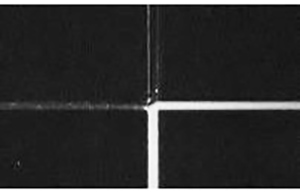Electrokinetic Gated Injection
Performing an Electrokinetic Gated Injection in a NanochannelElizaveta Davies et al July 4, 2012
The microfluidic chip platform offers an advantage for electrokinetic chemical separations by eliminating the dead volume normally encountered with tubing connections. In order to capitalize on this advantage, sample injections must be performed on chip.
The gated injection loads a variable injection volume by controlling velocity and injection time. The gated injection controls plug size using either hydrodynamic or electrokinetic flow. By the precise control of velocity and timing in multiple channels, the amount of sample loaded onto the separation channel can be varied. The goal is to find a balance between sample volume and the separation limits of detection (LOD) and resolution.
The HVS448 programmable eight-channel high voltage power supply meets the gated injection requirements, easily controlling the four ports required to perform an electrokinetic on-chip gated injection. Operating using Sequence™ software, each electrode can be programmed with voltage and switch times with the precision required for reproducible injection volume definition.
The SVM340 Synchronized Video Microscope is an inverted fluorescence microscope that functions as an affordable optical lab bench. Due to the unique design that features a translatable camera, motionless stage and uScope™ software, it is possible to view, record, and process data for the injection and measure the downstream separated sample plug without disturbing the fluid- and electrode-to-chip connections.
These features have been employed by Davies, Lucio, Bishop, Del Bonis O-Donnell, and Pennathur to successfully produce a teaching laboratory exercise for performing and analyzing an electrokinetic microfluidic gated-injection of a fluorescent dye.
Application: Lab-on-a-Chip

